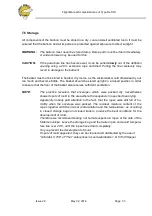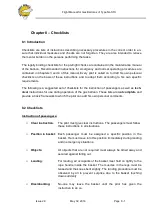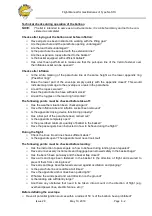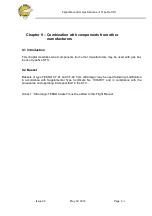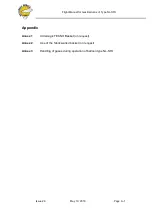
Flight Manual for Gas Balloons of Type NL-STU
Issue 2.0
May 02, 2016
Page 7-2
Approval for return to service must be granted in accordance with FAA Code FAR Part 43 if the
balloon is registered in the USA or in accordance with EASA PART M if the balloon is registered
in the area covered by EASA.
The following examples may be considered as preventive maintenance:
• Cleaning and inspection of the envelope and its ropes
• Cleaning and inspection of the load ring and basket
• Replacement of suspension ropes
A more detailed description of the preventive maintenance measures can be found in EASA
PART M Appendix VIII or, for operation in USA, in 14 CFR PART 43, Appendix A.
Most repair and maintenance work is not considered as preventive maintenance and must be
carried out in accordance with FAA Code 14 CFR PART 43, section 43.3, by authorized per-
sons, e.g. persons with a repair license, or in accordance with the EASA regulation, PART M,
by recognized maintenance organizations. The pilot/owner may only perform the preventive
maintenance tasks that are described in greater detail in the balloon’s “Instructions for Contin-
ued Airworthiness” manual.
7.4 Transport by road
After the flight, the envelope of the balloon is to be packed using the packing tarp provided. Dur-
ing transport, the envelope must always be placed in such a way that the hard parts of the ap-
pendix and load ring lie on top. This prevents damage to the envelope and ropes that might be
caused by constant chafing during transport.
7.5 Cleaning and upkeep
Envelope:
The envelope can be cleaned with warm water and dishwashing detergent.
Basket.
The wickerwork and the floor of the basket should be cleaned with a brush to
remove dirt. The leather parts can be treated with dubbin wax. The use of high-
pressure cleaners is
not
recommended.
Ropes:
In the same way as the envelope, the ropes can be rinsed in warm water with
dishwashing detergent.
NOTE:
It is important to allow all parts of the balloon to dry well after cleaning in order to
prevent the formation of mildew. You are strongly advised not to use heating ap-
pliances to accelerate the drying process.
















